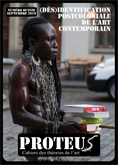Penser l’instrumentalisation critique de l’art avec Andrea Fraser
Abstract
 Télécharger l’article
Télécharger l’article
Paru dans : Proteus n°15

La démarche de l’artiste américaine Andrea Fraser consiste pour une large part en une instrumentalisation du cadre institutionnel de l’art qui lui permet d’agir sur le champ plus vaste des rapports de force sociaux. Dans cet article, il s’agira d’apprécier dans quelle mesure le fait d’appréhender l’institution artistique comme un « champ », au sens bourdieusien, permet à Fraser de questionner l’articulation entre champ artistique et champ social, aussi bien dans ses performances, ses installations que dans ses articles. Cette étude se proposera de dégager trois façons différentes de se servir de l’art en tant que champ relativement autonome pour mener à bien une entreprise critique : tout d’abord, en lisière du cadre institutionnel (« in and out of place »), puis, au cœur des rapports de force du champ artistique (« within the field »), enfin, depuis une sphère préservée, avec un impact critique modeste (« from home »). Ainsi, grâce à cette « méthodologie de réflexion critique de la spécificité du site », que Fraser promeut, son œuvre nous aide à comprendre les diverses façons dont un artiste peut se servir de l’autonomie relative du champ artiste à des fins émancipatrices.
Mots-clés : Bourdieu — critique institutionnelle — champ artistique — performance — instrumentalisation
The American artist Andrea Fraser’s approach consists largely of a kind of instrumentalization of the art world in order to affect a wider context including social relationships. Through her artistic performances, installations, as well as through her articles, Fraser questions the articulation between artistic and social fields. The issue at stake in this article will be one of evaluating the extent to which Bourdieu’s concept of “field” plays an important role in this process. This essay will examine three different ways Fraser’s work uses art as a relatively autonomous field in order to engage in critical analyses. First, on the edge of the institutional field (“in and out of place”), second, within the heart of the artistic power relations (“within the field”), and last, within a protected sphere, with a limited critical impact (“from home”). The “methodology of critically reflexive site-specificity” she promotes and uses allows us to understand the different manners in which the relative autonomy of the artistic field can be used by an artist to emancipatory ends.
Keywords: Bourdieu — institutional critique — artistic field — performance/enactment — instrumentalization








